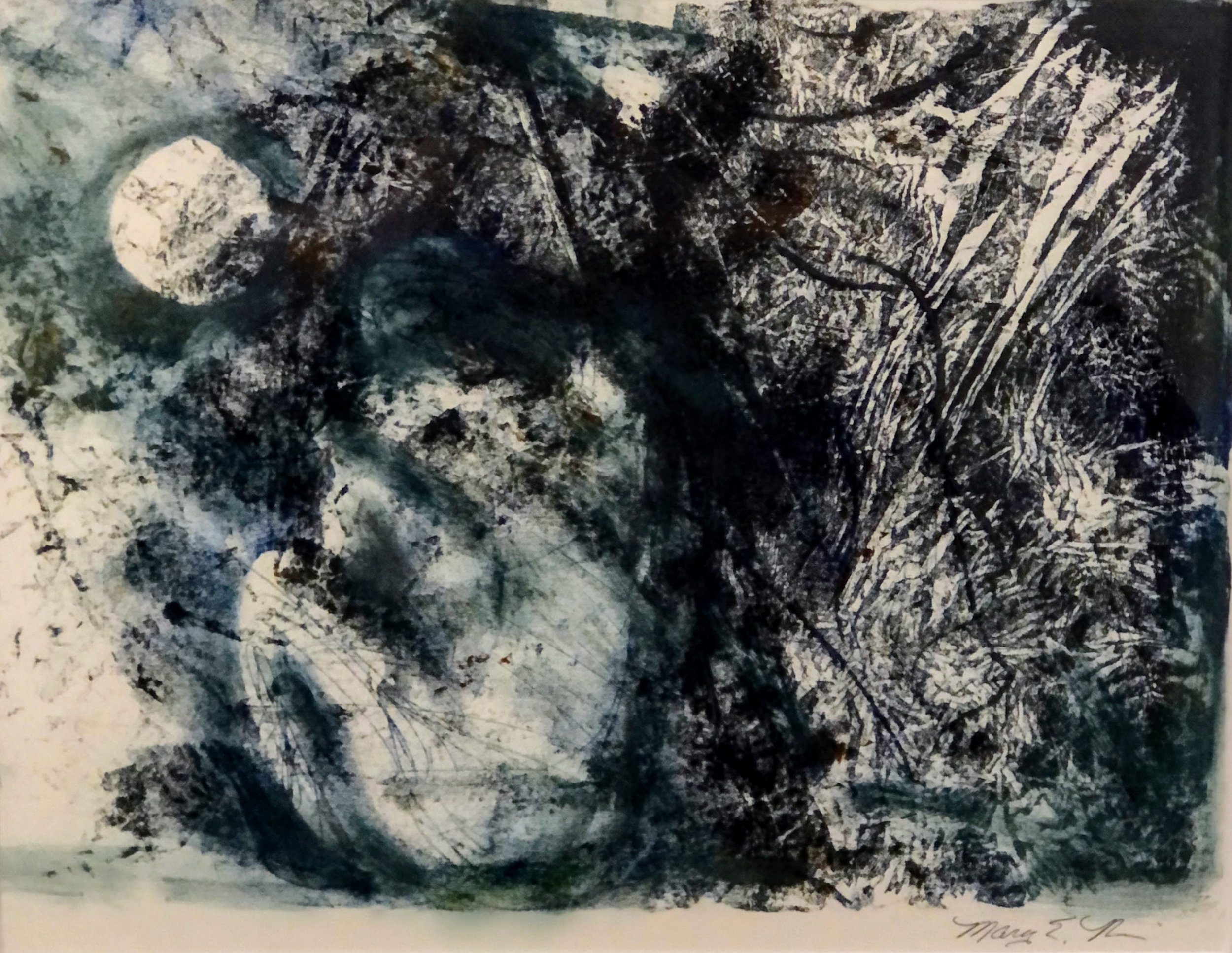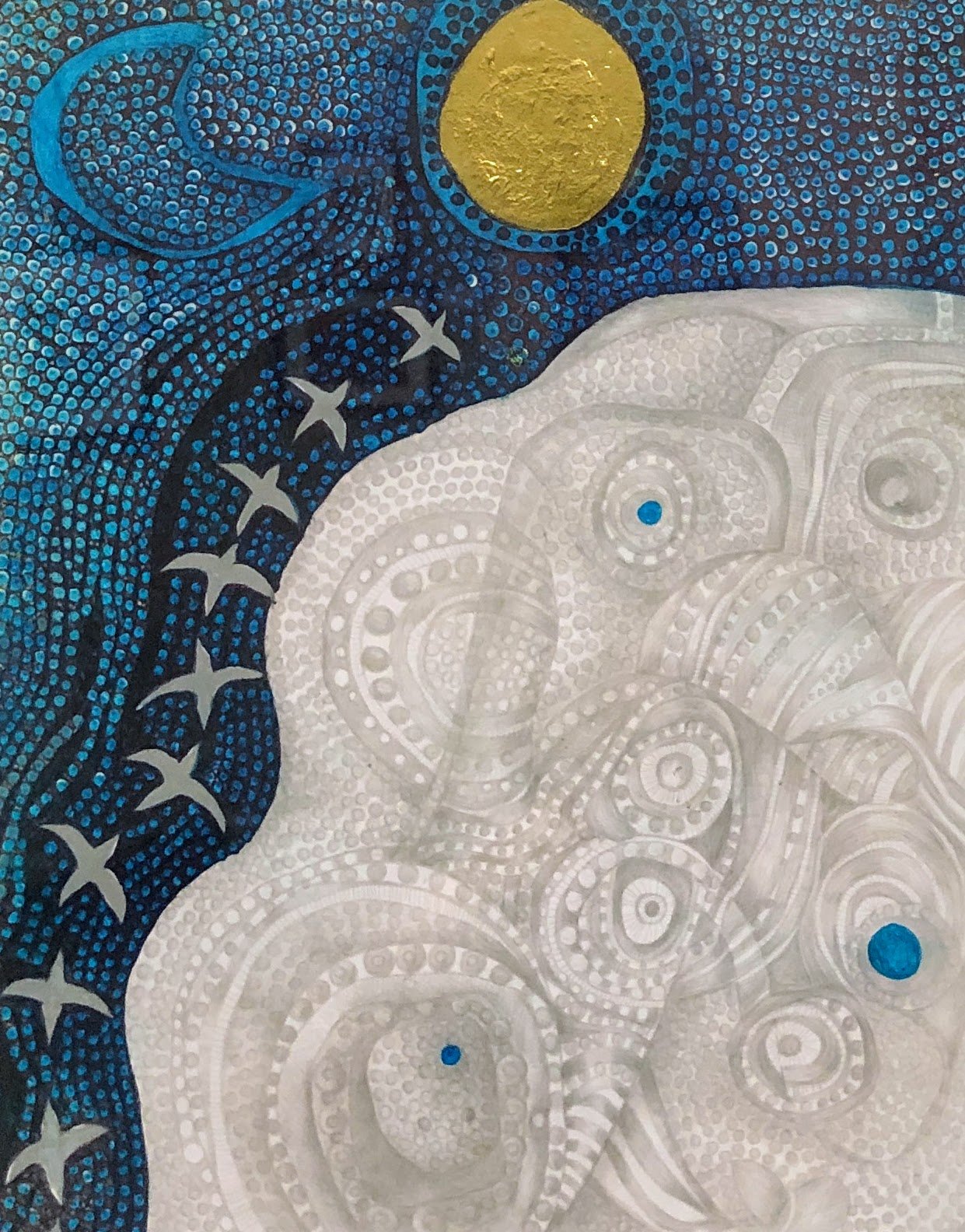In-Person & Virtual Exhibition!
Duration:
May 5 - June 26
The gallery at the Cultural Arts Center is open Thursdays thru Sundays, 1:00PM to 5:00PM
Scroll down to see virtual show!
“Explorations: Photographs by Jeff McDonald” and “Around and Around”
On May 5, 2022, the Whitewater Arts Alliance will be presenting a gallery exhibition of work created by Mary Nevicosi and Jeff McDonald. This exhibition will be on display through June 26 in the Cultural Arts Center located at 402 W. Main St., Whitewater. The gallery will be open Thursdays through Sundays from 1pm - 5pm. There will also be a virtual display.
There was a reception on May 7, 2022 at the Cultural Arts Center. Both Mary and Jeff were present. The reception was free to the public.
“Explorations: Photographs by Jeff McDonald” is one half of the exhibit to be displayed in May. McDonald's photography has been awarded medals at international photography competitions in the United States, Canada, Australia, Europe, Africa, and Asia. His photographic interests include black and white, long exposure, landscape, birds-in-flight, and various types of studio photography.
Born in west-central Iowa in the late 1950's, he grew up on a dairy farm in southern Wisconsin. After receiving Bachelor of Music and Master of Business Administration degrees from UW-Whitewater, he spent 18 years working in information technology and executive management with a large supplier of musical instruments and related products in the Milwaukee area. He later spent 14 years working at a local bank as its information security officer and a member of its board of directors. For the last five years, he has performed IT, web, and accounting work for a local Whitewater company.
He has served as a board member of the Whitewater Arts Alliance for 7 years, including several years as its treasurer. He continues to chair the Annual Fran Achen Photography Competition. Photography has been his passionate pursuit for over 15 years.
Photographic influences for McDonald include Joel Tjintjelaar, Julia Anna Gospodarou, Michael Kenna, Jack Curran, Fan Ho, Alexey Titarenko, Susan Burnstine, Jim Welninski, and numerous others.
“Around and Around” is the other half of the exhibit to be displayed in May. Mary Nevicosi was born in Watertown, Wisconsin, and has spent her entire professional life surrounded by the natural beauty of the state’s Southeast region. Nevicosi enjoyed a successful career of more than a dozen years with what is now George Williams College of Aurora University in Lake Geneva, as an Assistant Director of Marketing and Graphic Designer. During her employment at the University, Nevicosi created and curated the on-campus Gallery for Wisconsin Artists in 1997.
After leaving Aurora University, Nevicosi was employed at The Diamond Center (Janesville and Madison) from 2007 till 2013 as Art Director and custom jewelry designer.
Changing her goals in the helping professions, Nevicosi pursued further education at Blackhawk Technical College, Janesville, securing her certification and working as a Medical Technologist.
Nevicosi and her husband, Jim, live deep in the heart of the Southeast Kettle Moraine area, where she now works as a “clean” studio artist. She uses no solvents and no cadmium colors. Rather, she uses walnut oil and natural colors that are close in tone and vibrancy but don’t contain poisonous chemicals—and she uses environmentally friendly lighting and often works on recycled surfaces.
In addition to oil painting, Nevicosi draws intricate portraits and landscapes in ballpoint pen and on her computer. Nevicosi and Jim raised three children and are delighting in their seven grandchildren and one current rescued “landrace” dog, an American Dingo or Carolina dog, named Honey.
Considered a regional artist, Nevicosi has exhibited her work extensively. Her paintings have been shown at George Williams College of AU; West Bend Museum of Wisconsin Art; Fort Atkinson’s Hoard Museum, Monroe Clinic, Portage Arts Alliance, and the Alexander House Center. Her work has been sold in area galleries and is in permanent collections of several Universities and corporations.
An artist’s statement provided by Jeff McDonald: This exhibit represents several ongoing bodies of my work, two of them relatively new.
About a third of the photographs are representative of much of my black and white work. As explorations of the interplay between shadow and highlight, this work tends toward the dark side with lots of shadow detail together with areas of contrasting highlights. Realizing my vision for these images depends on getting a good base image in the field and then, heavily, on post-production processing in the digital darkroom. Sometimes I have a clear vision of a finished image while I am still in the field, but more often at that point I have a good general idea of the direction for an image. The image comes to life later when I can evaluate its potential and coax it into how best to represent my vision.
In 2020, I was exploring alternative methods of storytelling through photography. That search led me to the Interpretations collection. These are photographs that have been [re]interpreted using digital post-production software tools to take them in directions more akin with illustration and painting. This project evolved into a book with 42 images. Seven of them are on display here.
Liquidity (The Oil and Water Studies and the Parasols) is a new, ongoing, body of work which consists of photographs made of liquids. The studio setups for these range from the simple and straightforward to the highly technical and complex.
The Oil and Water Studies are composed of oil, water, and carefully positioned colored light; the Parasols are a different matter entirely.
The images in the Parasols series remind me of, well, parasols. They are high-speed photographs of colliding drops of liquid. This type of photography presents a number of technical challenges starting with the type and viscosity of the liquid being used and the sizes of and timing between drops used to produce the collisions. Small changes in the sizes of the droplets or the milliseconds between drops make a world of difference in the result. Yes, I said milliseconds. Lighting is another big issue. In most types of photography, motion is frozen, or not, by varying the shutter speed. Very few cameras, even the most high-end professional cameras, have shutter speeds fast enough to freeze the motion of drop collisions. Even if they did they would still not be able to produce high quality images without intense, controlled lighting. Instead, very short, intense bursts of light are used to both illuminate and freeze motion. By short burst I mean around 1/18,000 second. To produce bursts this short involves using speedlights (small, portable flash units) set on near to their lowest power settings (which produce light in the shortest bursts). Since they are set to low power, they produce less light so this needs to be offset by the addition of more flash units (which need to be identical in order for their bursts of light to occur at precisely the same time -- if they are slightly out of sync there will be ghosts from the various timings of the pulses of light). These images were shot using six identical speedlights controlled wirelessly from the camera, four back-lighting a white, translucent piece of acrylic for the background along with two to illuminate the front of the droplets from either side.These were photographed in a darkened room with the shutter open for the entire duration of the drop sequence but using the flash duration to freeze the motion. Of course, none of the technical challenges are of any importance unless the images are interesting. I think these are interesting and I hope you agree.
Chemical Abstractions, another new and ongoing body of work, are both very real and very abstract. The subject matter, as with many abstracts, is probably not readily apparent. These happen to be photographs of various chemical crystals with birefringent properties. They were photographed in cross-polarized light through a compound microscope. One of the first things you will no doubt notice about them is the bright colors in many of them. This is pretty much the way they look when looking through the microscope. The colors result from projecting polarized light through birefringent crystals, then cross-polarizing the light for your eyes through the eyepieces or for the camera. The compositions were chosen because they either reminded me of something to anthropomorphize or had an element such as line, texture, shape, color, or something else that made them (to me) interesting enough to photograph.
This show covers a lot of ground and I hope you enjoy it.
An artist’s statement provided by Mary Nevicosi: Everything in nature excites me. I love wild sunsets, birds migrating and even the dark November days. My whole life has been spent in SE Wisconsin and it is the centerpiece of my art. It always reflects my love of the outside. I experience life in the colors of nature and create art that shares those experiences with others.
This newest collection of work represents an ongoing artistic evolution, an extreme departure from my loose, impressionistic oil landscapes to detailed pen drawings influenced by Aboriginal paintings. The work is delicate, intricate and intense.
Interspersed are small, saturated, minimalist oil landscapes which were also created the past two years.
Jeff McDonald, photographer
Mary Nevicosi, oil painter
Jeff McDonald’s Chemical Abstraction series
Jeff McDonald’s Highlights with Shadows series
Jeff McDonald’s interpretations Series
Jeff McDonald’s Liquidity series
Mary Nevicosi
Thank you for viewing our virtual show!



































































